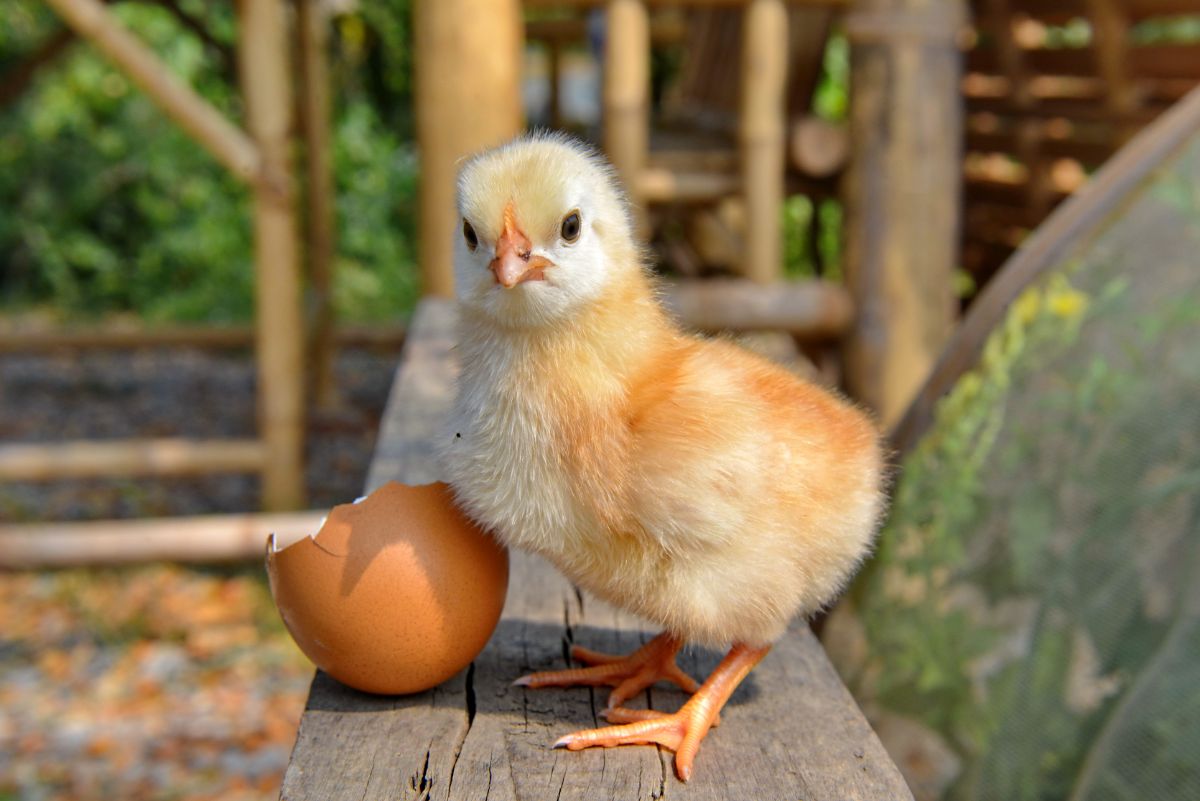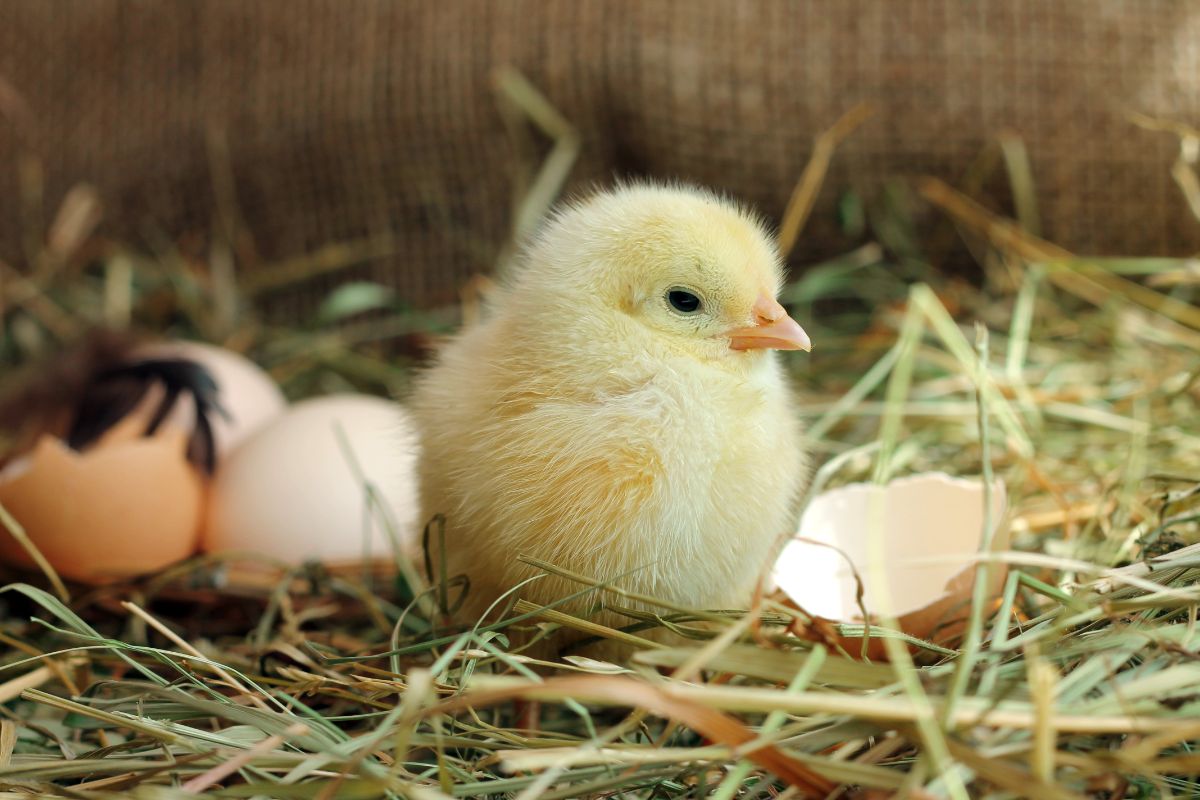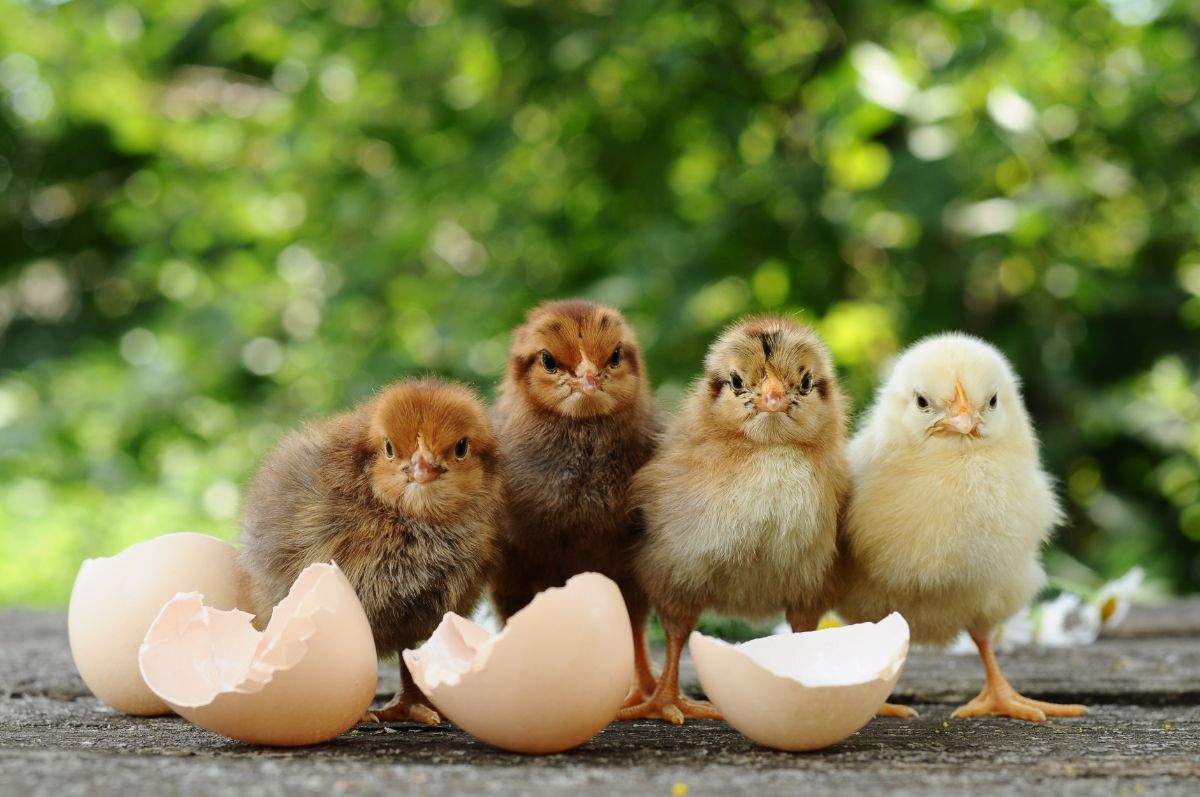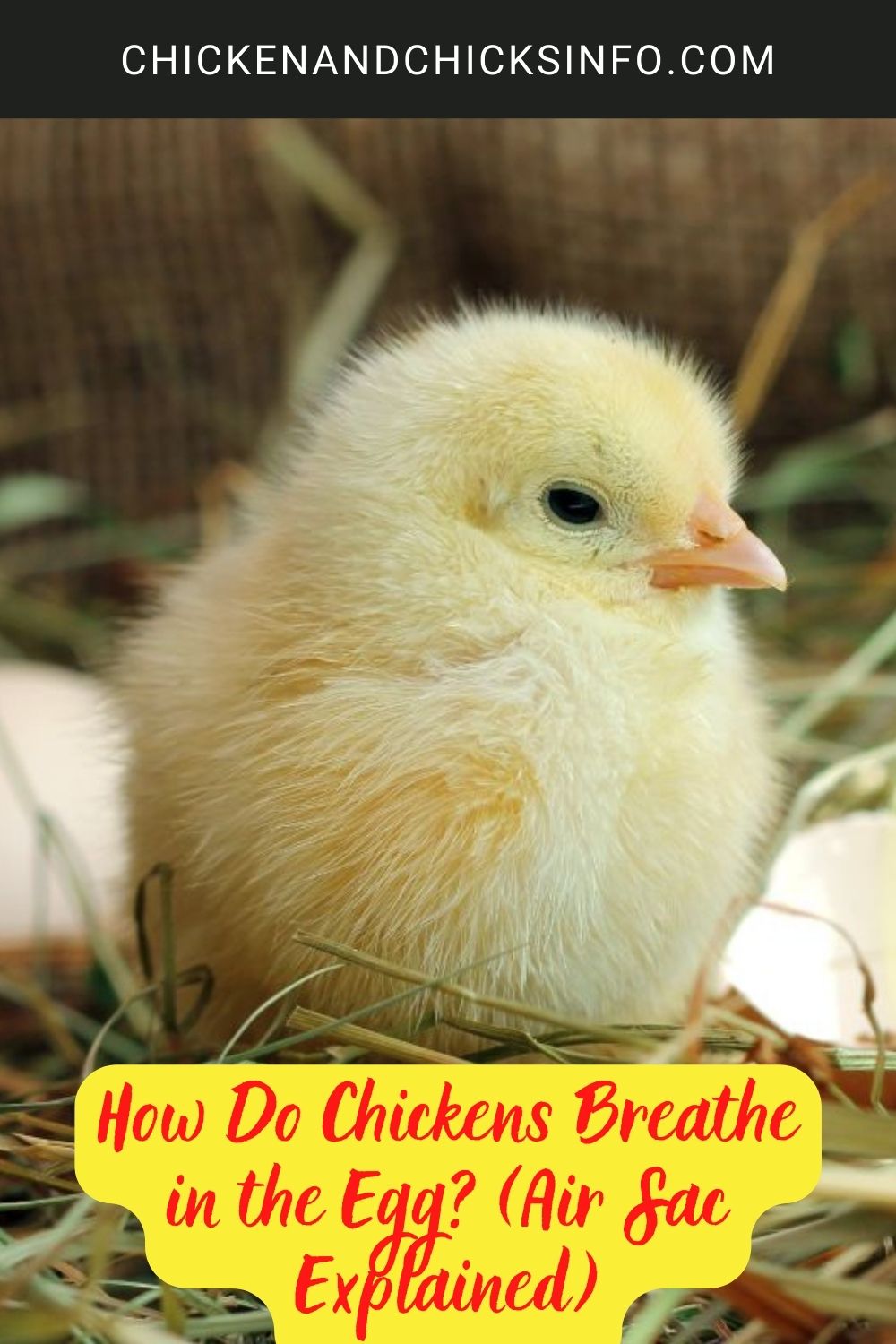
Ever wondered, "how do chickens breathe in the egg?"
I know I used to until I had someone explain to me how chickens - and other birds - breathe while inside an egg.
It's a fascinating topic and further proof that nature really is magnificent!
Jump to:
How Do Chickens Breathe in the Egg?
When an embryo starts to develop inside an egg oxygen is supplied through an air sac located at the base of the egg.
In addition to this, eggshells are porous and allow the exchange of gasses to escape and air to penetrate into the egg.
This is because as the oxygen inside the egg is used by the embryo/chick to produce energy, carbon dioxide is created as a byproduct.
If the carbon dioxide couldn't leave the egg this would be fatal to the chick.
It's hard to understand this when looking at an egg from the outside. You can't see any visible holes, and eggshells are really hard.
So, while a chick isn't breathing air freely inside the egg, as that's not possible, it is getting all the air it needs - even when an egg is situated underneath the mother hen!
Can Chickens Suffocate in the Egg?

Now that we know how chickens breathe in the egg, you might be wondering if it's possible for them to suffocate.
The good news is that it's very rare for a chick to suffocate inside an egg.
This is because even though the air sac at the bottom of the egg only provides a small amount of oxygen, nature has designed it to be just right for the chick.
Sure, sometimes something goes wrong during the development of an embryo, as is always a possibility.
But as long as you're doing everything right and providing the right conditions in an incubator, or leaving it up to mother hen problems are rare.
Are Eggs Porous?
Eggs, or more accurately eggshells, are porous, yes.
This is both essential to the chick being able to develop inside the egg and is also the way bacteria later penetrates the egg and causes them to go bad quicker.
The air sack can only hold so much oxygen before it runs out, so it's essential that air is also able to find its way through the shell.
The same applies to the carbon dioxide that's being produced inside the egg, it's the pores in the shell that allows this gas to escape.
This post states that an eggshell has as many as 17,000 tiny pores.
There are two ways you can test this or prove it to yourself.
The first is to use a super-powerful microscope that will enable you to literally see all the tiny little pores - but I appreciate that's unlikely.
The other way is to do what's known as the 'float test'. This means putting an egg into a bowl of water and seeing if it floats.
This test is used to test how fresh an egg is. The quicker or further an egg sinks in water, the fresher it is.
If an egg floats, it's gone bad.
This is because this shows that as the egg has aged more air has seeped in through the pores.
Are Chicks Eating While Inside the Egg?

Embryos require nutrition to develop, and this comes from the yolk (the yellow part) of an egg.
The yolk is attached to the embryo via the yolk sac.
This sac contains everything the chick needs in those early stages and will gradually diminish in size as the embryo grows.
The yolk is essentially like a little food store and will provide all the energy and nutrients a chick needs to develop and hatch.
A baby chick is even able to survive for 1-3 days after hatching from the nutrients provided by the yolk sac.
Related - Chick not hatching after 21 days? Read this post!
Eggs Come With A ‘Bloom’ Protective Coating
When a chicken lays an egg, it comes coated with a thin film-like substance known as the bloom or cuticle
This is basically nature's protective coating that helps protect the contents of the egg from bacteria seeping through the porous shell.
If you wash a fresh egg, the bloom will be removed.
In fact, in the US eggs are washed as part of the processing they go through before making it onto the shelves for sale.
This is why eggs have to be stored in refrigerated conditions. In a lot of other countries, most noticeably in Europe, eggs are not washed before being sold.
This allows the bloom to stay intact, and therefore eggs do not need to be refrigerated to slow the progression of bacteria.
In Summary
Now you know how chickens breathe in the egg, as well as a few other interesting facts about eggs too!
The next time you see a mother hen sitting on her eggs, or find an egg in the nest box, you'll have a better understanding of what's going on inside that hard shell.
And if someone asks you; how do chickens breathe in the egg? You'll be able to impress them!





